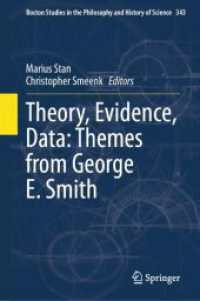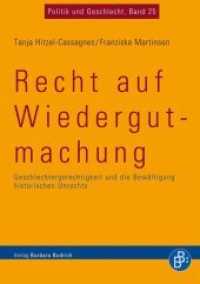Full Description
California Gold offers a compelling cultural snapshot of a diverse California during the 1930s at the height of the New Deal, drawing on the career of folk music collector Sidney Robertson and the musical culture of often-unheard voices. Robertson—an intrepid young woman armed only with a map, her notebooks, and the recording equipment of the time—proposed and directed a New Deal initiative, the WPA California Folk Music Project, designed to survey musical traditions from a wide range of English-speaking and immigrant communities in Northern California. In California Gold, Catherine Hiebert Kerst explores Robertson's distinctive and modern approach to fieldwork and examines the numerous ethnographic documentary materials she generated with WPA project staff to capture a cross-section of the music that people were actively performing in their communities. Kerst highlights some of the most notable songs, images, and ephemera of the collection, capturing and contextualizing the diverse musical traditions that California immigrant communities performed during the New Deal era. Kerst also foregrounds the ethnographic insights and accomplishments of a significant woman folk music collector who has received less attention than she deserves.
Contents
Contents
Foreword by Carla Hayden
Poem by Juan Felipe Herrera, U.S. Poet Laureate, 2015-2017
"Music That's Gifted to Us": Documenting the California Folk Music Project
Note to the Reader
1 • New Deal Woman: Sidney Robertson and the WPA California Folk Music Project, 1938-1940
2 • Singing of Love and Life: The Musical Heritage of California's Spanish, Portuguese Azoreans,and Basques
3 • Popular Musical Traditions of Anglo-American Migrants to California
4 • Exploring the Diversity of Musical Cultures in New Deal California
Epilogue
Acknowledgments
Chronology: Sidney Robertson in California, 1937-1940
Notes
Note on Sources
Selected Sources
Subject Index
Title Index








